From the end of the 7th century, the Hijazi script was homogenized and reworked in a context marked by the increasingly widespread use of the Arabic alphabet throughout the Empire. It was at this time that the Umayyad caliph ‘Abd al-Malik (646 – 705) imposed the use of Arabic script in chancery. This period saw the emergence of the Kufic style, mainly used for writing the Qur’an and decorating monuments. The Dome of the Rock mosque (Masjid Qubbatul-Sakhra) in Jerusalem, decorated with Qur’anic quotations in the angular style known as Kufic, is an emblematic example of this writing style.
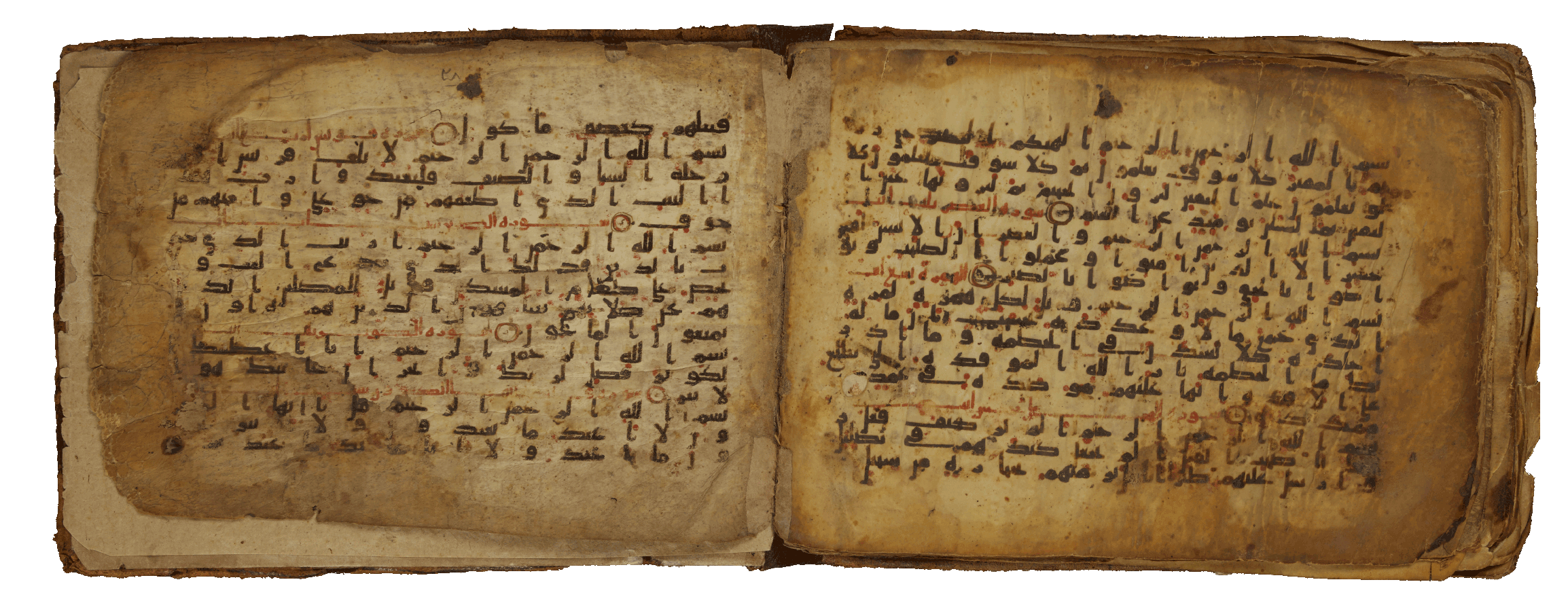
Manuscript of the Qur’an
Suras CII to CX
8th century
Style: Early Kufic
Parchment, 19,5 x 13 cm
ADLANIA Foundation, Manuscripts, MAN-179
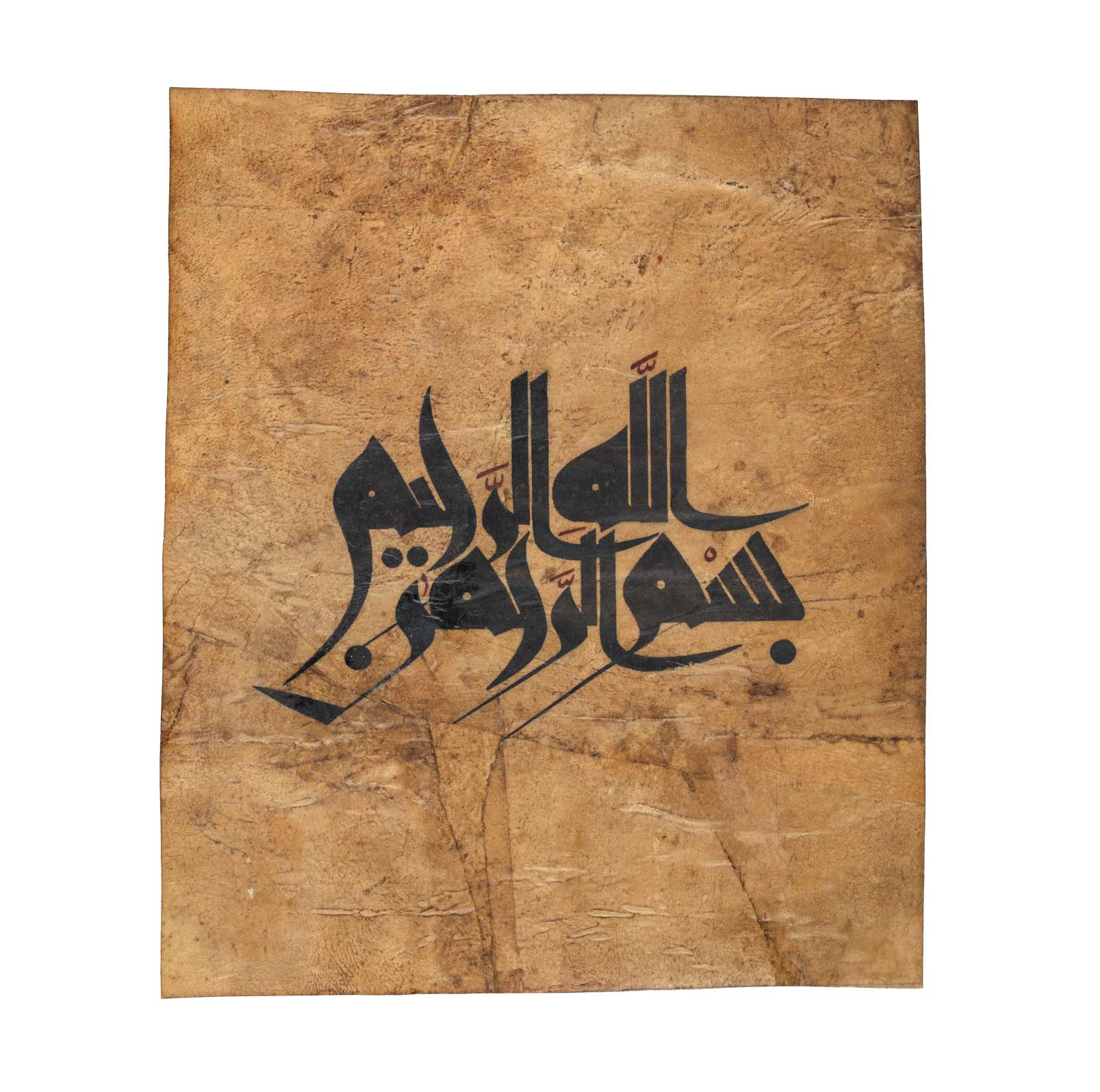
Calligraphy of the “bismallah”
Style: Kufic
Parchment, 23,5 x 19,6 cm
ADLANIA Foundation, Manuscripts, MAN-514
1. The Kufa school
It was in Kufa, from the 8th century onwards, that a new calligraphic style called “kûfî“, aiming at aesthetic perfection, appeared alongside the hîjâzi These were the first styles used for writing the Qur’an.
As the names of the precursors of this first school have been forgotten, the tree of transmission of this apprenticeship is traced back to Hassan al-Basri (642-728), one of the first links in certain Sufi spiritual chains and a pupil of Alî ibn Abî Tâlib (circa 600-661).
1.1 Calligraphic styles
Kûfî (8th century)
Kûfî script is characterized by its straight, angular lines. The latter are characterized by the use of short vertical strokes, extended horizontal lines that often end up rounded, and blanks to insert a regular cadence and to separate words. Archaic kûfî is particularly difficult to decipher, as it is devoid of vocalization and vowel marks. To make reading easier, certain colored signs are added as they become necessary. Calligraphers of this style enriched Kûfî writing, notably by adding arabesque at the beginning and end of the Holy Qur’an to enhance the overall beauty of the Arabic characters.
The development of the kûfî style reached its peak during the Abbasid dynasty, when over seventy variants of kûfî script were recorded, including :
- rectangular kûfî (“shutranji” or “chess set”), mainly used in architectural decor, with its highly geometric (labyrinthine) layout;
- “flowery” kûfî, used in the art of bookmaking, notably for title pages, monument decoration, pottery, ceramics, etc.;
- interlaced kûfî, which has since become an ornamental motif of choice in Maghrebian (North African) art, mainly in sculpted or chased plasterwork.
1.2 Founding masters
Khalid ibn al-Hayyâj (7th century)
Khalid ibn al-Hayyâj was the official scribe of Caliph Al-Walîd ibn Abdul Malik (668-715), known for his patronage of Islamic arts and architecture. In addition to his role in the realization of major architectural projects, he is known as the author of the calligraphy decorating the Medina mosque and for his contribution to the creation of numerous large and prestigious copies of the Qur’an.
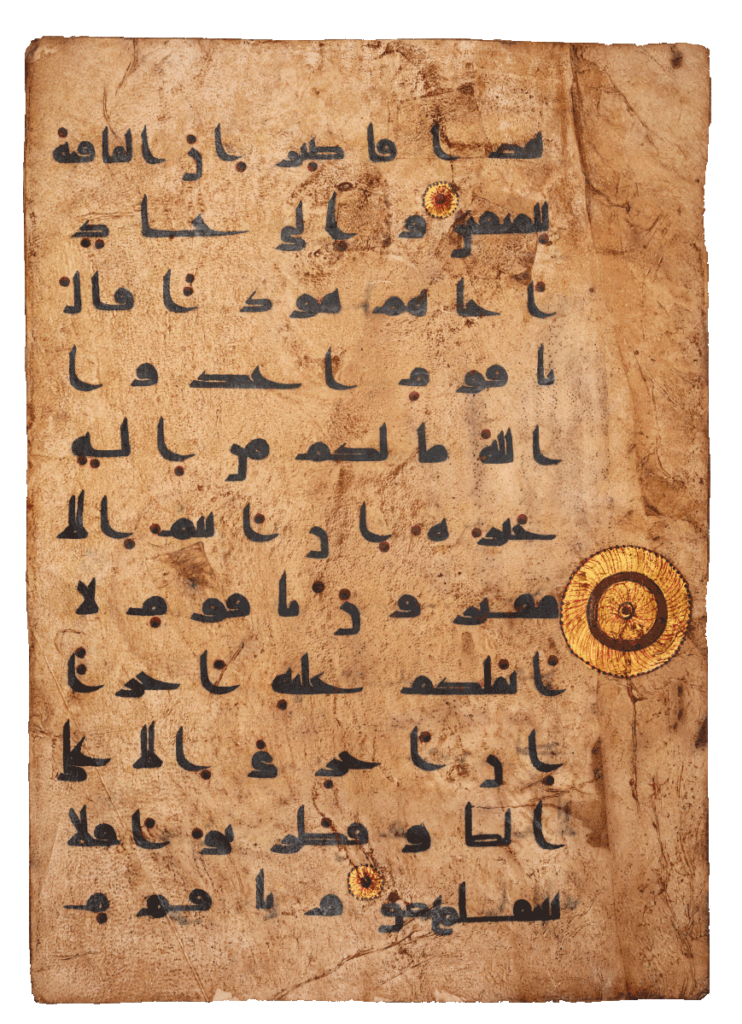
Page from a copy of the Qur’an
Sura XI 49-50,
9th century
Style: Early Kufic
Parchment, 29,4 x 20,8 cm
ADLANIA Foundation, Manuscripts, MAN-513
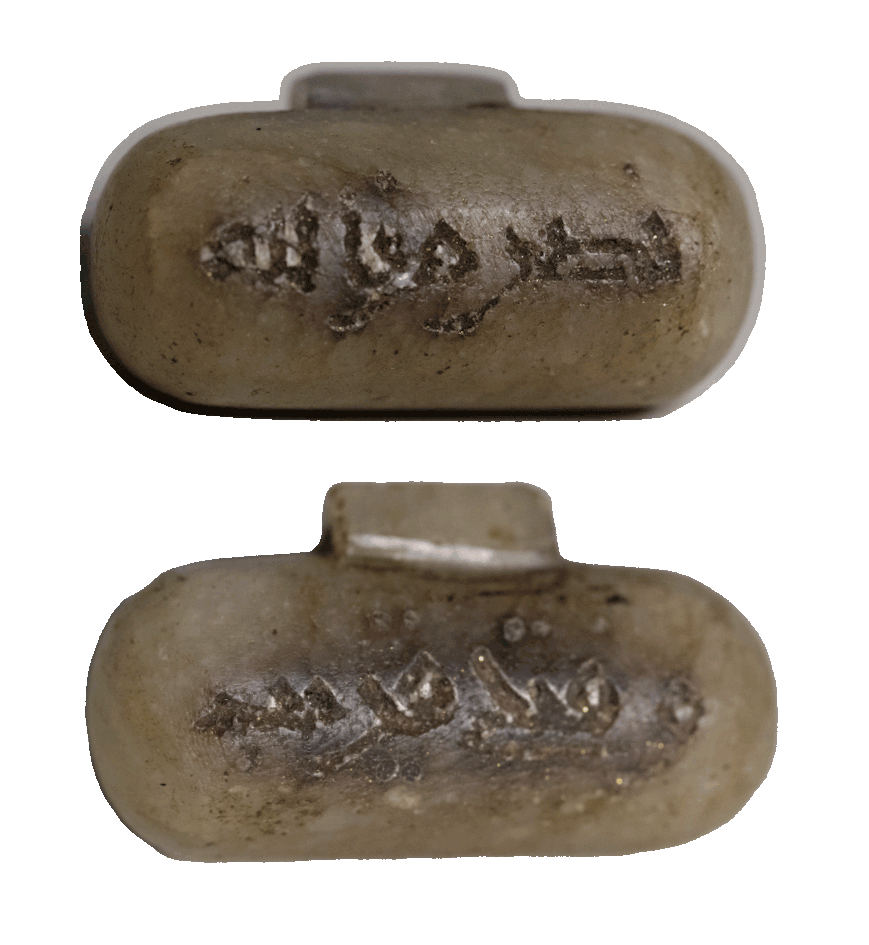
Nephrite jade pendant
with inscription in Kûfî script
Sura LXI, 13
2 x 4 cm
ADLANIA Foundation, Objects, OBJ-3589

Page from a copy of the Qur’an
Gold writing on blue background
Sura XXX 28
Style: Kufic
ADLANIA Foundation, Manuscripts, MAN-630
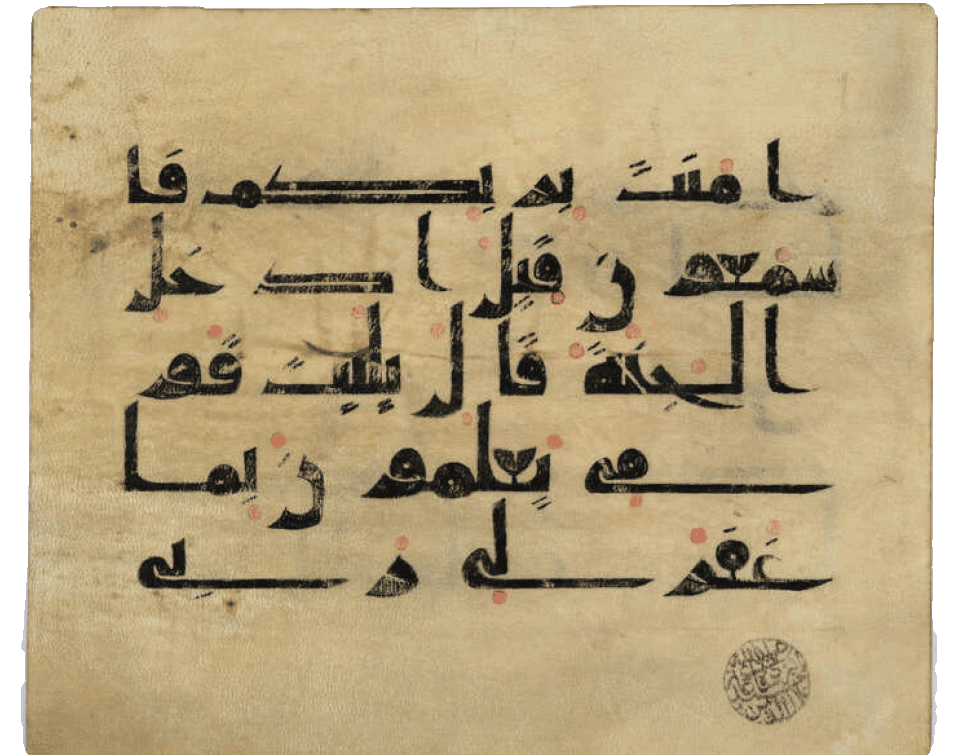
Page from a copy of the Qur’an
Sura XXXVI 25-27
Style: Early Kufic
Parchment, 20 x 28 cm
ADLANIA Foundation, Manuscripts, MAN-575
2. Andalusian-Maghrebian school (929-1031)
(929-1031)
The Umayyads of Andalusia, from the Arabic name al-Andalus, established a caliphal dynasty in 929. This period saw the blossoming of a brilliant cultural center that spread throughout the Mediterranean basin, giving rise to the al-Maghribi school. The “Dâr al-islâm” encompasses two schools of Islamic calligraphy: al-mashriqî from the Islamic East and al-maghribî from Western Egypt through Southern Europe (Andalusia, Sicily, etc.). The al-maghribî school, which originated in Kairouan, disseminated a Western kûfî style of writing, characterized by geometric shapes, square letters and elaborate ornamentation. It influenced Qur’anic calligraphy, giving rise to four writing variants: al-‘andalûsî, al-qayrawânî, sudânî and fâsî.
2.1 Calligraphic styles
Maghribî
Maghribi calligraphy emerged in the 9th century and reached its peak in the 11th century. It is characterized by fine lines, generous shapes and slightly varying notation for certain letters. This cursive style was commonly used for religious, administrative and literary texts. It was also used to decorate palaces and mosques in North Africa and Andalusia, notably the Alhambra (Granada). Ibn al-Jazarî, a Muslim scholar (1350 – 1429) who lived in Andalusia, is one of the most famous Maghribi calligraphers.
Andalûsî
The Andalusî calligraphic style flourished in Andalusia from the 9th to the 15th century. Linked to the Maghribi school, it is characterized by curved, flowing forms, with attention to harmonious lines and balanced composition. Letters are decorated with floral and geometric motifs, and manuscripts are adorned with shimmering colors and gold.
Used in mosques, palaces and madrasas, andalûsî calligraphy adorns wall and architectural decorations with Qur’anic verses, poems and decorative inscriptions, adding an aesthetic touch to these spaces. Originally from Cordoba, Andalusian calligraphy merged with the Fâsî style after the Arabs left the Andalusian lands.
Chroniclers of the time report that Aïcha bint Ahmad bin Muhammad bin Qâdim al-Qurtubiyya (d. 1009), from a famous family of scholars in Cordoba, was one of the great minds to shine in Andalusia. A poetess during the reign of Al-Mansûr (714-775) and his sons, she is also renowned for her mastery of the art of calligraphy. In particular, she produced several copies of the Qur’an.
Sudanî (10th century)
Sudanî calligraphy is a style developed in West Africa. It is characterized by fluid strokes, gentle curves and ornate lettering, while incorporating local artistic elements. Used for religious texts, poems and administrative documents, it expresses the culture and art of West Africa through a variety of calligraphic styles: al-sûqî, al-sahrâwî, al-hawsî , al-maghribî and al-charqî.
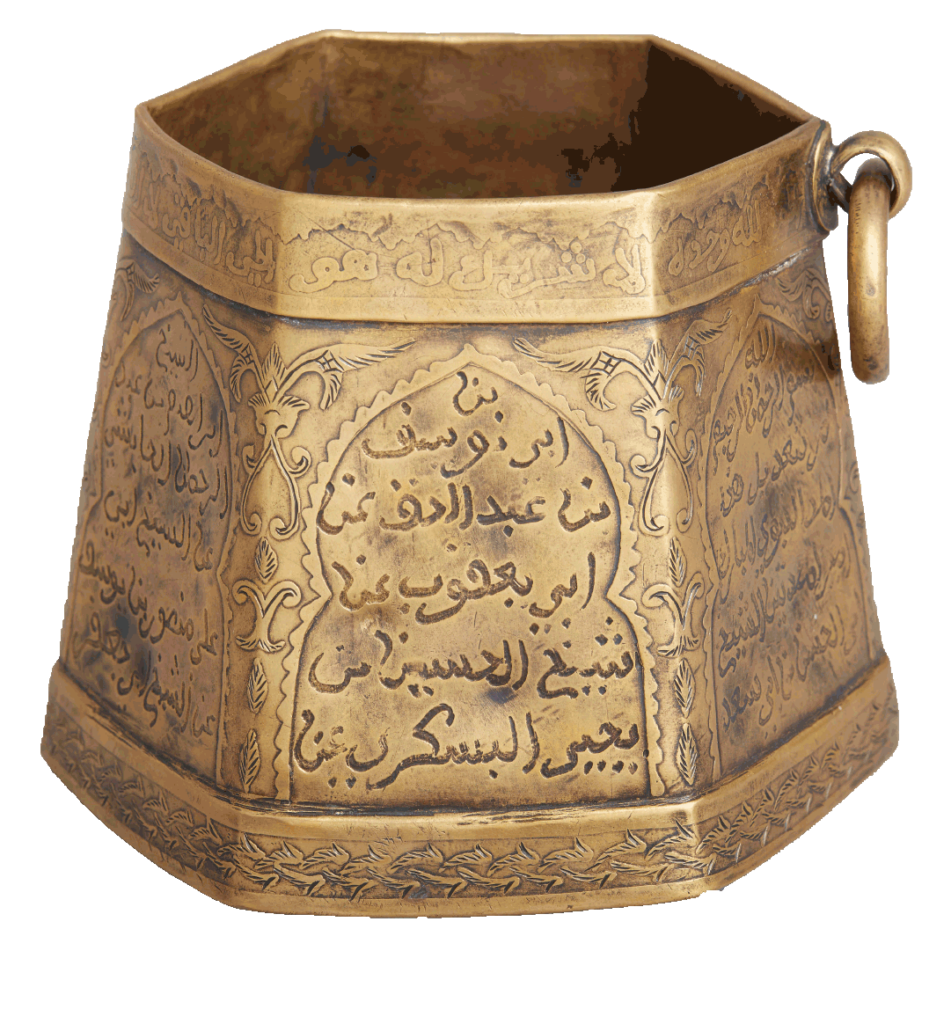
Alms-measuring cup (Mudd) with calligraphic inscriptions
Date of manufacture: 1504
Mohamed Ibn Abderahman
Copper
ADLANIA Foundation, Objects, OBJ-3060
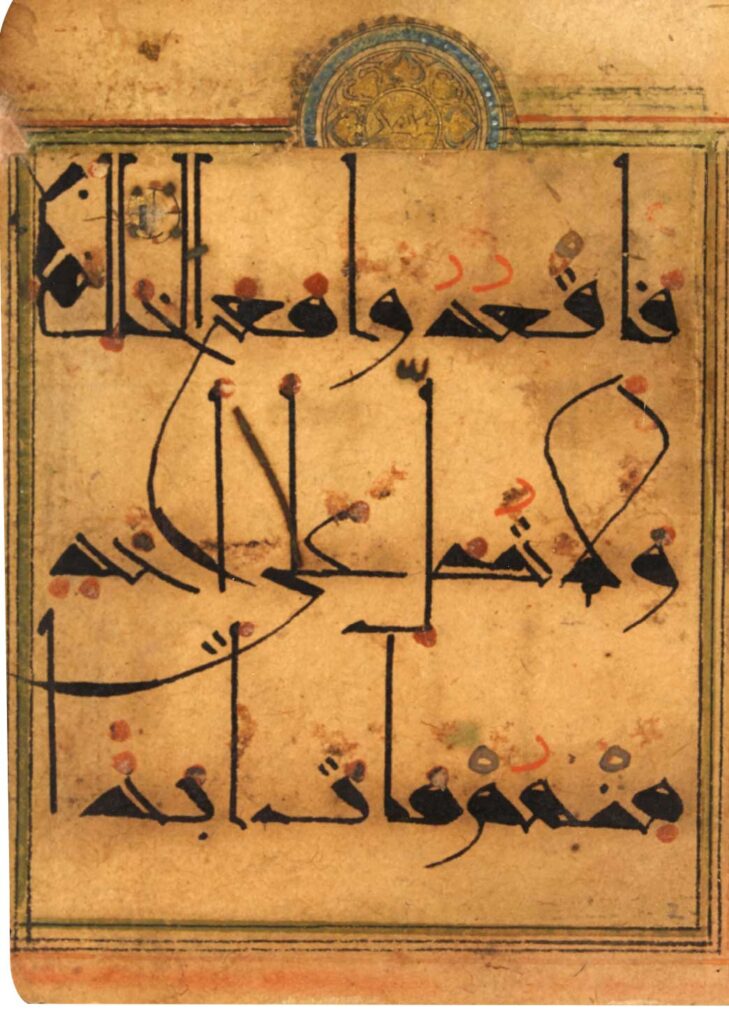
Page from a copy of the Qur’an
Sura IX 83-84
Style: Kûfî qayrawânî
Paper, 13 x 9,5
ADLANIA Foundation, Manuscripts, MAN-180
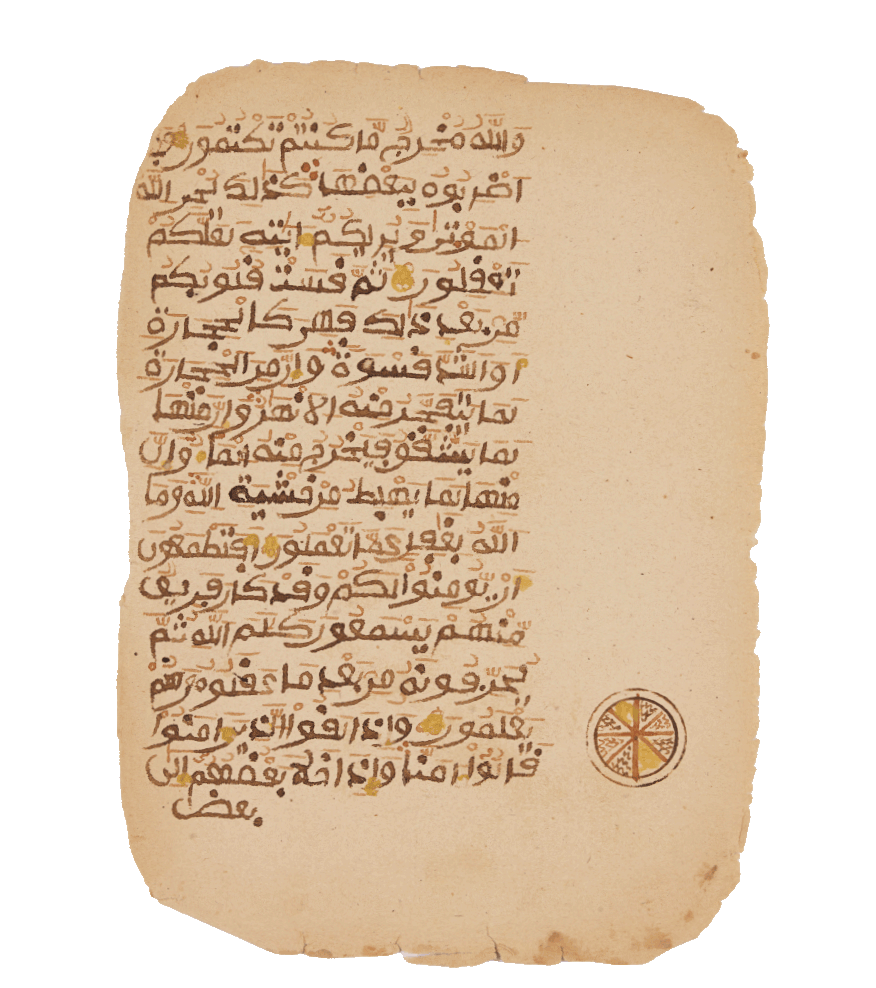
Manuscript of the Qur’an
Sura II 72-76
Style: Sudânî
Paper, 20 x 16 cm
ADLANIA Foundation, Manuscripts, MAN-118
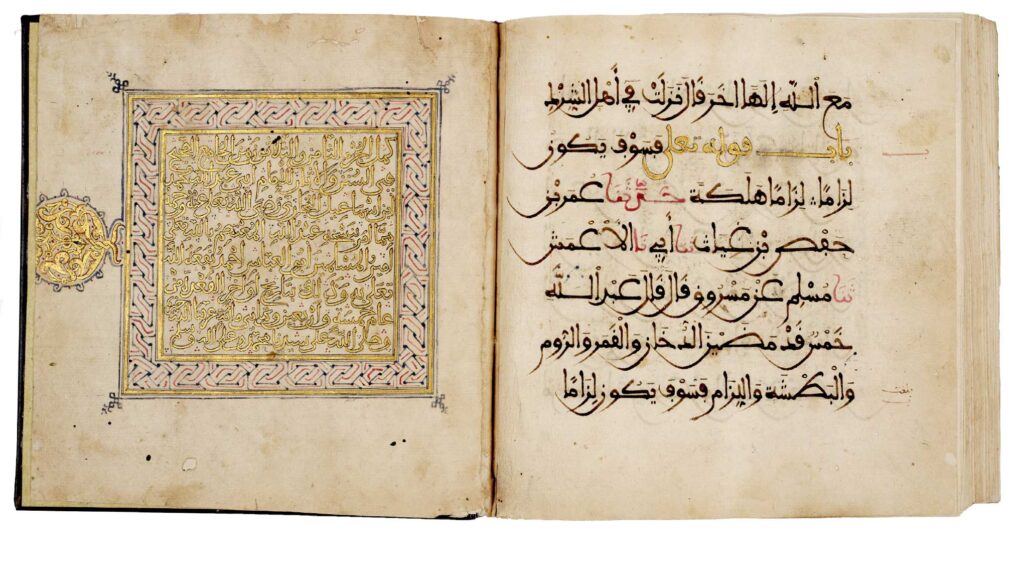
Collection of Hadiths (sayings of the Prophet)
Al-Bukhârî, al-Jâmi’ al-Sahîh
Tunisia, 14th century
Style: Maghribî
Paper, 21 x 19 cm
ADLANIA Foundation, Manuscripts, MAN-199
2.2 Founding masters
Al-Jazarî al-Saqqa (1185-1256) was an Arab calligrapher born in Cordoba. He is known for his role in the development of the Maghribi style and for his calligraphic compositions. He was also an expert in the art of composing the inks and colors used in Arabic writing. He perfected his own ink blends, experimenting with the use of various pigments to obtain specific shades.
Al-Sharafî (circa 1266-1323) was an eminent Maghrebian calligrapher of the Marinid period. He is renowned for his significant contributions to the Maghribi Andalusian school. His calligraphic style is renowned for its refinement and complex decorative elements.
Muhammad as-Soufî (13th century) lived in the Valencia region of Spain. He bequeathed to posterity a manuscript of the Qur’an, calligraphed and enriched with beautiful illuminations, dated 1285, whose distinctive feature is that the titles of certain suras differ from those used in the standard version of the Qur’an.
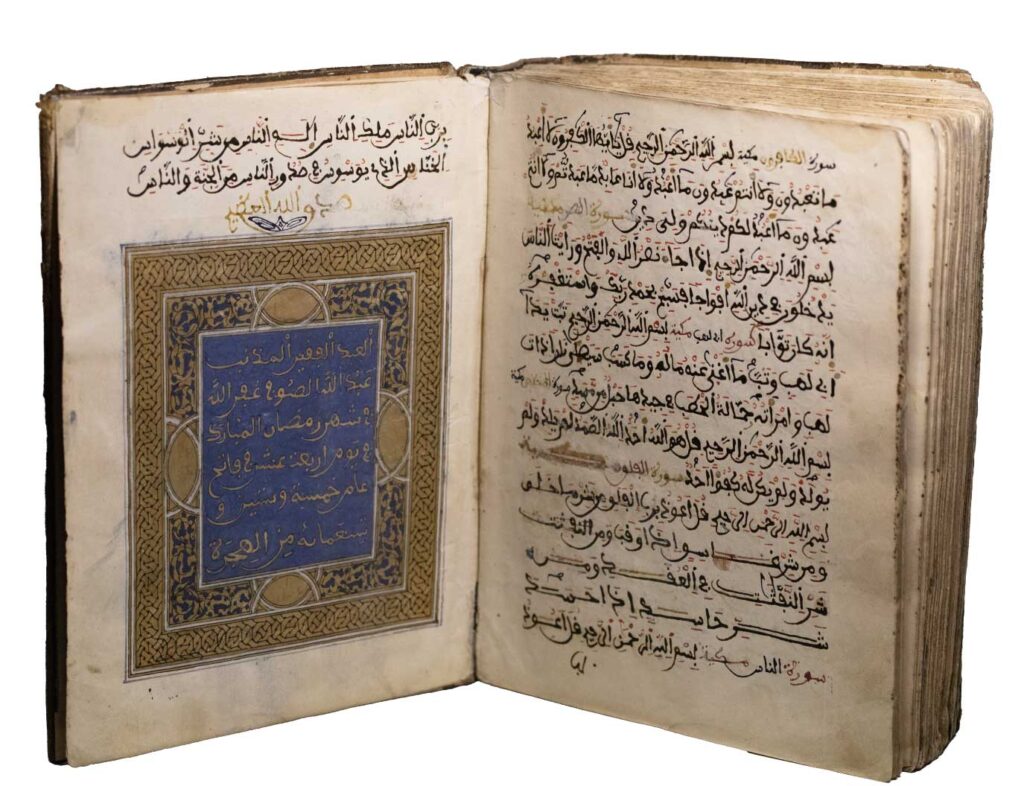
Manuscript of the Qur’an
Suras CIX to CXIV with colophon
1558
Copyist: Abd Allâh al-Sūfī
Style: Maghribî
Paper, 22,5 x 18 cm
ADLANIA Foundation, Manuscripts, MAN-123